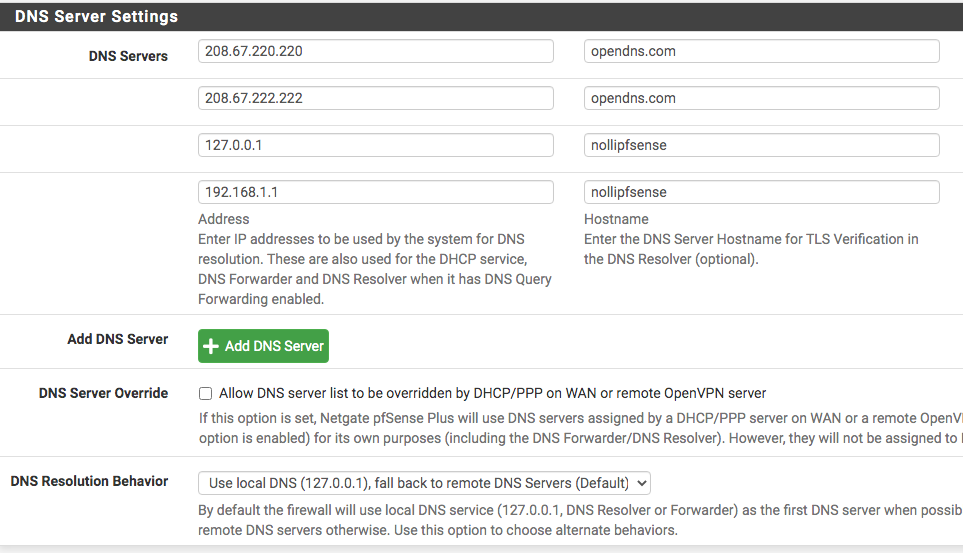For visiting readers, the solution is above — this is just follow up. And additional thanks.
@johnpoz -- Yup, you called it. ;)
So, in a post-mortem, one should ask how that got missed by me.
John's answer, "your "browser" or what your using to try and resolve these fqdn isn't using your dns - browsers like to use doh now.. which would point to some dns outside of your control" mentioned it, but my brain didn't pick up on it.
When I read the phrase "fdqn isn't using your dns", I immediately turned to my client's operating system's DNS resolvers – and that pointed to pfSense. It simply did not dawn on me that something else might be transporting, what I thought was strictly local, DNS resolution outside my network. And, as so, I wasn't in a mindset to go looking for that.
And, if I'm honest with myself, when I read "browsers like to use doh now" I completely misinterpreted that part of the sentence entirely. As the abbreviation doh all lowercase did not trigger anything to me as, at the time I read it, it was an unknown acronym that I didn't look up because was thinking he was saying this about 'browsers not using fully qualified domain names' (which he was not):
[image: 1646178036143-doh.png]
And, given that I had just – in err – having proved to myself I was pointing at pfSense, which it was, missed the subtly of what was actually being said.
'doh' didn't catch my attention, 'DoH' might have, but I was well down a different rabbit hole.
Having never have encountered this kind of problem before, and aware DoH (DNS over HTTPS) was in use just fine in other environments I've messed with, I didn't give it the second thought that it so rightly deserved.
Instead, I got hyper-focused on the 'forwarding' and 'DNSSEC' part, which were two things I went off to read about (and now in hindsight may not fully grok in the context of pfSense's unbound DNS Resolver).
The security device is a Firewalla Gold.
The way the hardware lab is set up is akin to this at the moment (it changes often):
[image: 1646179800517-the-lab.png]
At any given time either (or both) Firewalla devices may be removed; they tend to sit in bridge mode and send live notifications to my phone of devices being on the network that shouldn't be there (and give good insight to device details that are), further limit traffic by region, and provide alerts for certain kinds of activity or data usage patterns.
It has identified a number of devices sleeping in the closet I'd forgotten about and my DHCP pool was happily assigning addresses to, but I was having a hard time tracking down. It has also alerted me to rogue behaviors certain applications and devices do at off hours; stuff I would not have thought to dig through logs to find.
While I know they can act as firewalls themselves, I am extremely fond of pfSense and enjoy the low-level bit-twiddling granularity it provides. But there are high-level features pfSense simply does not provide (or I am ignorant of), and this fills those gaps when I'm not using the devices at external locations.
I'm not interested in having Firewalla be "the" firewall, as this configuration isn't for a home (rather a personal lab for education purposes), and I have no minors requiring content restrictions or scheduled access times.
I am acutely aware that it is possible to forego the need for two Firewalla devices (or even one) by integrating VLAN rules. Each Firewalla device has its own profiles, which I can compare behaviors.
The current set of experiments are around keeping devices on various networks from seeing each other at level 2 and/or level 3 layers or only allowing certain kinds of access, such as from one network but not the other.
I'm with you on not forwarding DNS, your arguments are sound, and I've been reading a number of security articles that say the same thing – much of the "protection" you think you're getting isn't real, as it can easily be determined by other ways.
I'll have to look into DNS Over TLS (DoT), as that was entirely new to me as well. Part of the adventure has been stepping into the deeper part of the networking pool to improve my own understanding, and I hit that point where the gentle tapering swimming pool bottom suddenly drops to well beyond my height.
Thank you again for all your help, insight, and advise.


